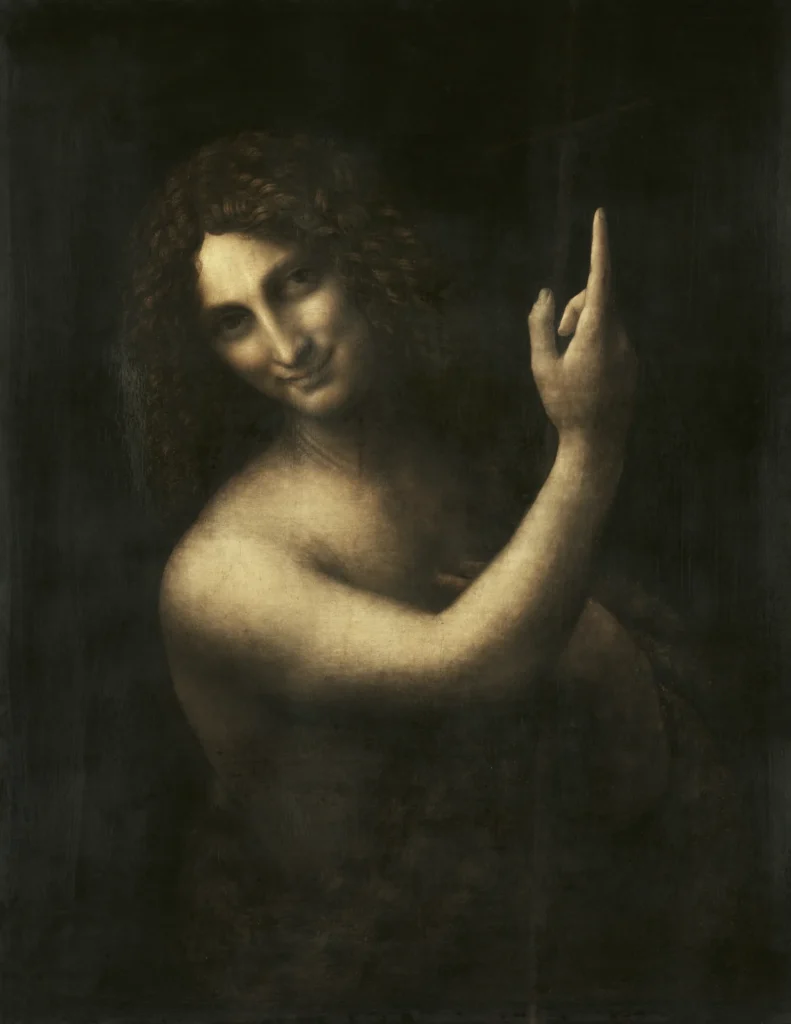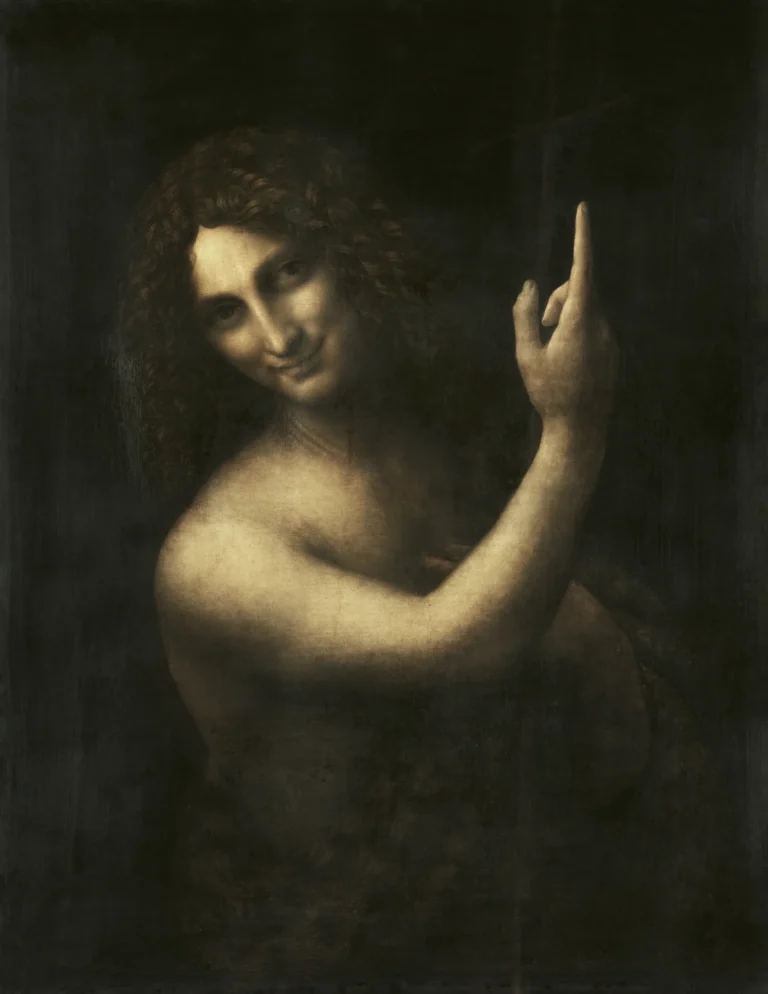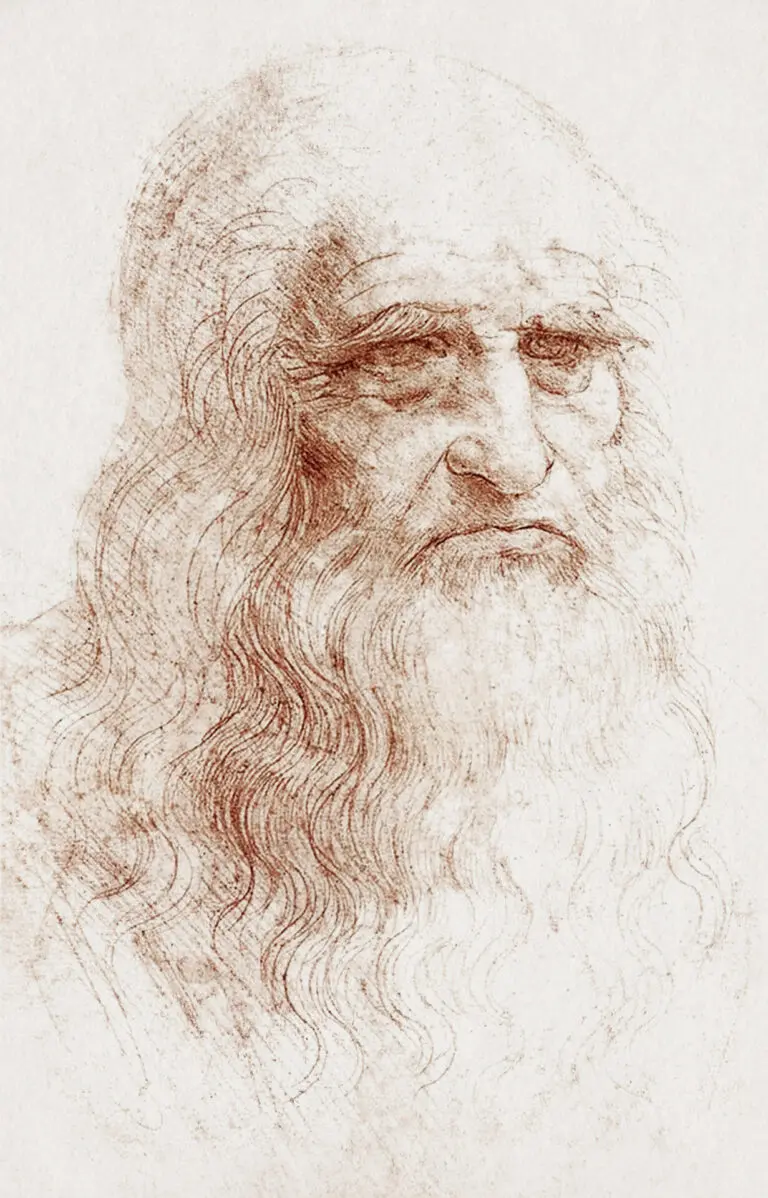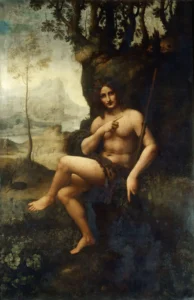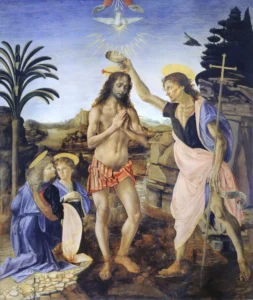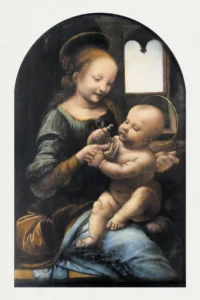Saint John the Baptist (1513-1516)
Painted by Leonardo da Vinci in the early 16th century, Saint John the Baptist is an oil on walnut wood work that captures the half-length figure of the biblical saint in a moment of introspective contemplation. With a luxurious fur garment and an enigmatic smile reminiscent of the Mona Lisa, the painting stands out for its innovative use of chiaroscuro and sfumato. John the Baptist's gesture of pointing towards the heavens underscores his role as a herald for Christ. This artwork embodies the artistic excellence and deep emotional resonance characteristic of Leonardo's later works.
1513 - 1516
About the Artwork
Saint John the Baptist was created during Leonardo da Vinci's final years, a time when he was reflecting on both his artistic journey and spiritual themes. Commissioned by the local church or private patron, it encapsulates the ambiance of Renaissance Florence, where painting flourished amid economic prosperity. John the Baptist, depicted in wayward opulence, symbolizes a break from tradition in his representation, which invites deeper questions regarding identity and representation in religious art. Following its completion, the painting was acquired by King Francis I of France, linking it to French royal heritage, and it eventually found its home in the Louvre, from which it has continued to inspire viewers worldwide. The 2016 restoration further revealed Leonardo's intricate brushwork, adding to its narrative of endurance and relevance throughout history.
Did You Know
Saint John the Baptist is considered one of Leonardo da Vinci’s last major works, showcasing his mastery and innovative techniques in the Renaissance period.
The painting highlights John the Baptist’s significance as the patron saint of Florence, reflecting the city’s cultural richness and prominence during the Renaissance.
Da Vinci’s use of sfumato in this work creates a soft transition between colors, impacting the way light and shadow are depicted, which has influenced generations of artists.




